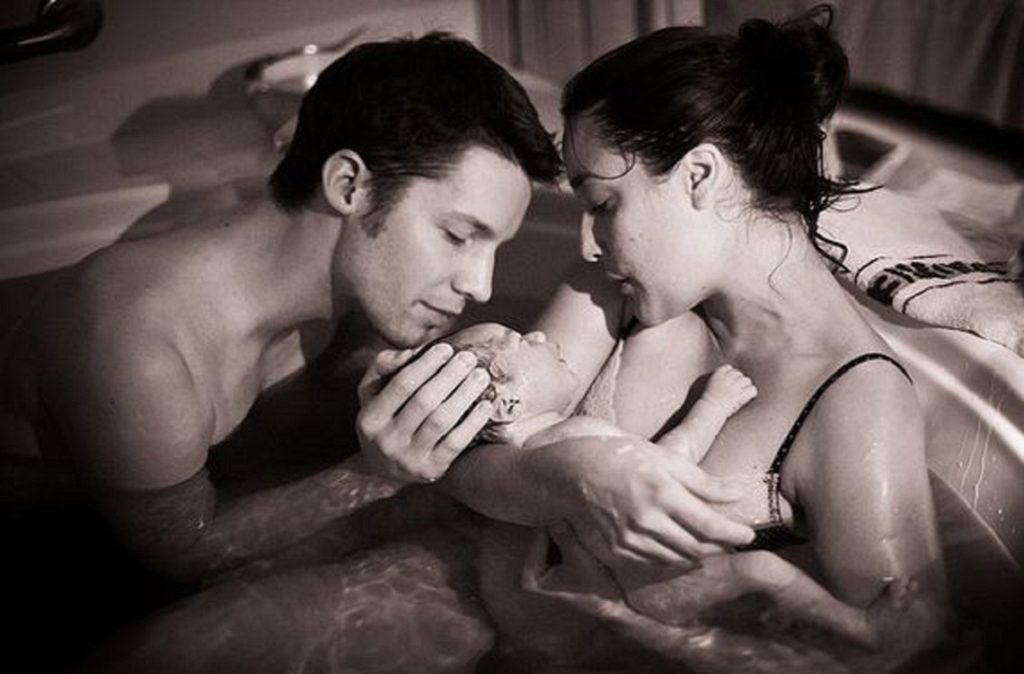Water birth is the process of giving birth in a tub of warm water. Waterbirth can be very helpful in coping through the pains and discomforts of labour. I’ve even heard of people describing it as a natural epidural.
Some women choose to labour in the water and get out for delivery. Other women decide to stay in the water for the delivery as well. The theory behind water birth is that since the baby has already been in the amniotic fluid sac for nine months, birthing in a similar environment is gentler for the baby and less stressful for the mother. Midwives, birthing centres, and a growing number of obstetricians believe that reducing the stress of labour and delivery will reduce fetal complications. Waterbirth should always occur under the supervision of a qualified health care provider.
You may not believe me, but I have news about Water Birth: Good news, and better news
Did you know that there are potential benefits of water birth?
Warm water is soothing, comforting and more relaxing. The warmth of the water soothed and relaxed the body making each contraction just a little bit easier. The effect of buoyancy lessens a mother’s body weight, allowing free movement and new positioning.
The immersion in water often helps lower high blood pressure caused by anxiety. The water seems to reduce stress-related hormones, allowing the mother’s body to produce endorphins which serve as pain-inhibitors.
Water causes the perineum to become more elastic and relaxed, reducing the incidence and severity of tearing and the need for an episiotomy and stitches.
As the labouring woman relaxes physically, she is able to relax mentally with a greater ability to focus on the birth process. Since the water provides a greater sense of privacy, it can reduce inhibitions, anxiety, and fears.
Meanwhile, there are benefits for babies too, it provides an environment similar to the amniotic sac. Also, eases the stress of birth, thus increasing reassurance and sense of security.
How to Prepare for a Water Birth?
Parents prepare for a water birth effectively when they set up the pool before labour begins. This way they learn about the pool, how it works, how to blow it up, how to hook up the hoses before they actually need it, etc.
Often after a birth pool trial run, parents may realize they don’t have everything they need. Maybe the hose isn’t long enough to reach the tub, they do not have the correct faucet adapter, their hot water heater is very small, etc.
Once the kinks have been worked out, there’s no need to keep the pool set up. After a trial run, empty the pool of its water. Do not keep the tub filled before labour begins. It is a drowning hazard but also the water will begin to grow bacteria – not a good place for a baby to be born.
What Temperature Should the Water Be for a Water Birth?
The temperature of a birth pool should be very close to the labouring mother’s body temperature – 98.6 degrees. Too hot of water could put the baby in distress but it can also increase the risk of postpartum haemorrhage.
As wonderful as scalding hot water may feel on the back, do not heat the water warmer than mom’s body temperature. If back pain or back labour is an issue, consider other natural remedies for back labour.
Why Are Water Birth Babies Blue?
After witnessing a handful of water births, some will notice that water birth babies are more likely to be born a little bit bluer than their counterparts. However, this doesn’t happen all of the time.
Who can’t have a water birth?
There are circumstances when a water birth isn’t recommended. In general, if there have been any complications in your pregnancy, such as bleeding in late pregnancy, go into labour early, or your baby is showing signs of distress, you’ll be advised against it. You’ll also be steered away from it if:
- You have a chronic health condition such as diabetes, heart disease or kidney disease; or a health problem that can be easily transferred to water, such as herpes.
- You have high blood pressure or develop pre-eclampsia.
- Your baby is very small or has not been growing well during your pregnancy.
- Your labour has been induced.
- You’re having twins or more. Your baby is breech (feet or bottom first).
- If you want to have a water birth at your local maternity unit, it also depends on access to a midwife with experience of water births when you go into labour. If there isn’t one on duty, you’ll probably be asked to get out of the birth pool for the actual delivery.
Purchase baby products at online store Motherhood.com.my to get more promotions and deals.
